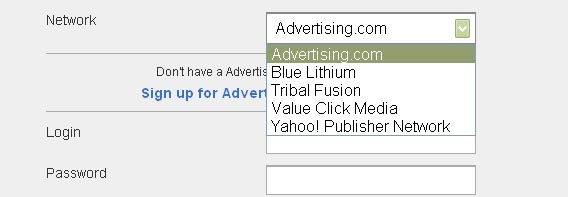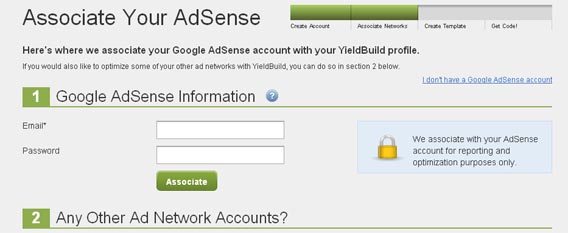
In this respect, I’ll take a look at how YieldBuild aims to maximize the amount of money you are currently making from your website and attempt to determine if YieldBuild is worth your while.
Optimized Income from Multiple Networks
Don’t put all your eggs in one basket. That’s why it’s so important to have a good mix of different advertising models on your website. If all you do is rely on Google AdSense, you’re leaving a lot of money on the table. However, in going through the different ad networks and all the different kinds of ads that they offer, it can take you a very long time and a lot of experimentation to find out exactly which combination generates the most amount of money.
Is it more appropriate to run AdSense inside each post and CPM ads in the sidebar? Or will you make more money if you go with an AdSense leaderboard at the top of the page and Tribal Fusion at the end of each post? What about color combinations? There are so many variables to consider that it would take a human being a literal eternity to find just the right combination. That’s where an automated solution like YieldBuild would come into play.

At this time, YieldBuild only works with the above ad networks, but support for other networks is reportedly on the way. By installing the YieldBuild code on your website or blog, the YieldBuild system will run through a series of “trial and error” sessions so that it can see which placements generate the most amount of money. Previous systems literally required hundreds of thousands of page impressions before any usable data was generated, but YieldBuild says that it can create some real results with a mere fraction of that.
Tweaking Ad Zones and Layout Styles
Not surprisingly, you’ll need to provide YieldBuild with private information regarding your various ad networks. Yes, this involves giving them your AdSense login name and password.

It’s natural to feel a little hesitant about doing this, because there really is no saying what they can do with that kind of information. Assuming that YieldBuild is not an elaborate phishing scam, it only makes sense that it would require this information to deploy all the different kinds of ad combinations. Without this ability to tweak, adjust, and alter the generated ad creatives, the YieldBuild monetization platform simply would not be able to function.
The setup process with YieldBuild involves the designation of numerous ad zones. These are areas where you can display advertising on your site, but where advertising may not necessarily appear. Going further, YieldBuild can not only determine the optimal ad network for each zone; it can also determine the right kind of ad creative from that network to be used in that zone.

Google AdSense is perhaps the simplest example of this. In AdSense, you can adjust the colors used, the style of the border, and other modifications. YieldBuild will go through several of these iterations to determine which ad format is the most profitable.
How Does YieldBuild Get Paid?
Looking at the YieldBuild Monetization Platform, it sounds like it could have a lot of promise. Having an automated system determine the ideal ad combination sounds a lot more appealing than suffering through the frustration of trying to figure it out yourself. I can’t say for certain, but the YieldBuild team says that revenue increases of 100% or more are not out of the question. You’ll also notice that there is no huge price tag associated to this platform.
How, then, does YieldBuild make money? There is no setup fee and there is no monthly subscription. While YieldBuild is absolutely free to use for the first 30 days, the FAQ says that YieldBuild will take 3% of your ad impressions after that. Assuming that you can gain at least a 3% increase in ad revenue, this sounds like it could be a worthwhile proposition.
CLICK HERE TO APPLY FOR YIELDBUILD BETA







![[persona-1.jpg]](http://1.bp.blogspot.com/_nRaTzJJHZ0w/STflE8U0rbI/AAAAAAAAABE/WF1SuY4lAjk/s1600/persona-1.jpg)


















